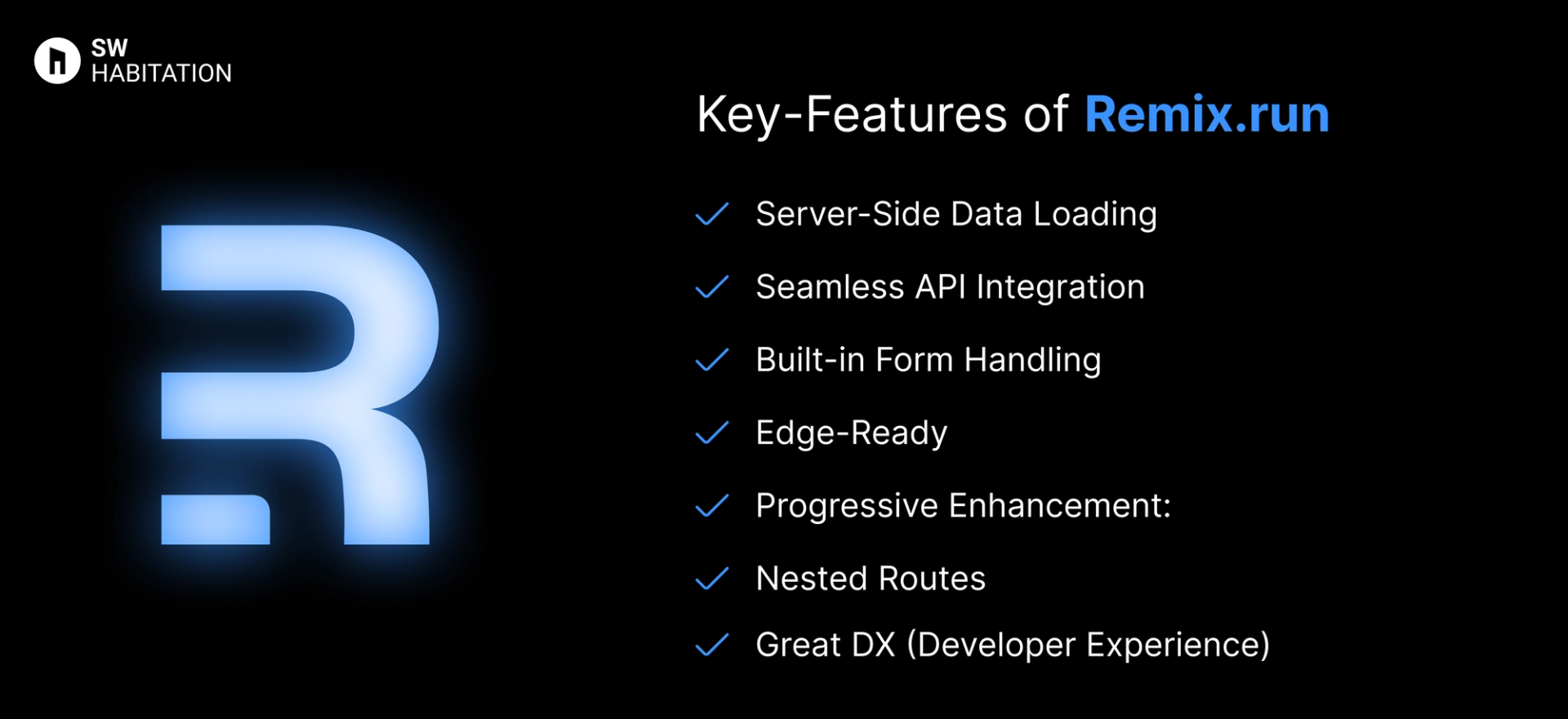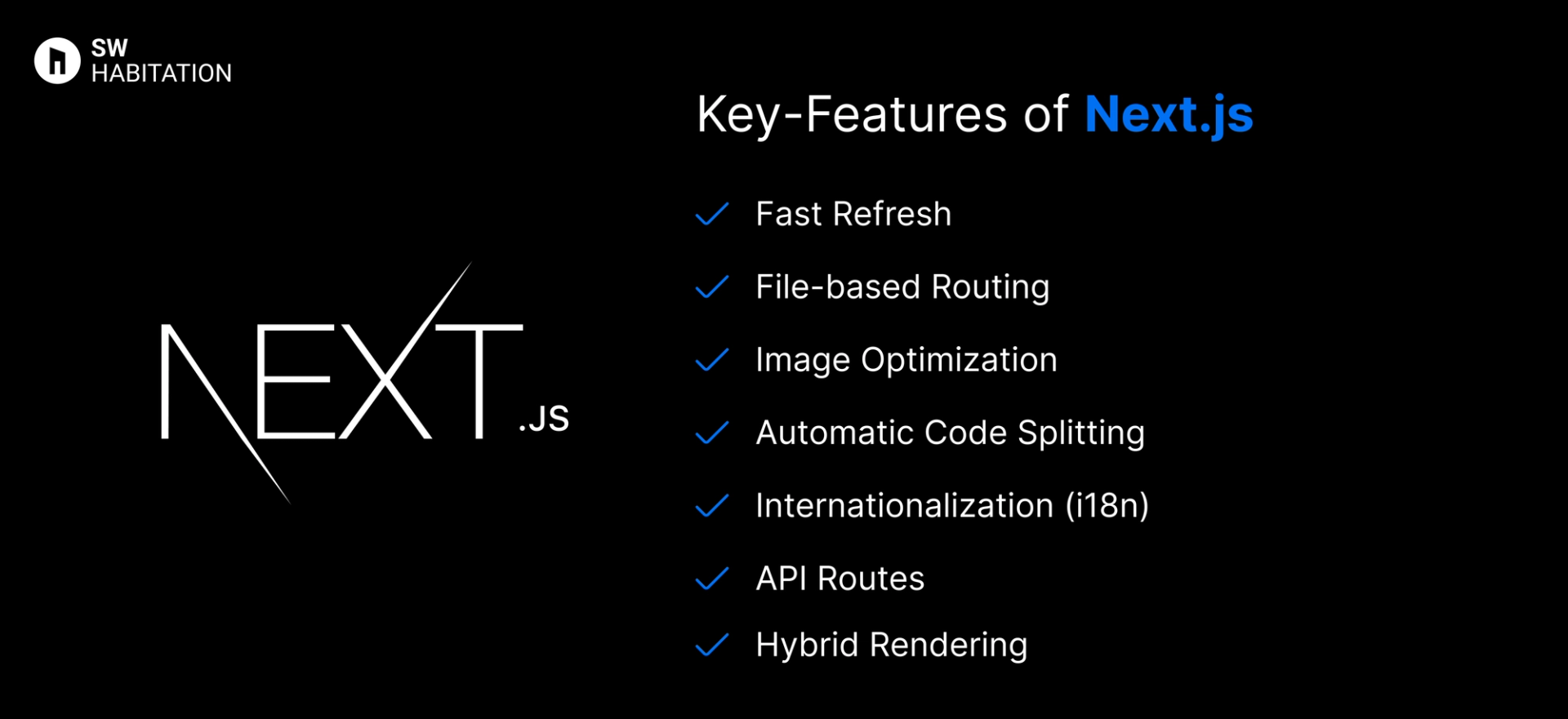Remix vs. Next.js

Remix

Next.js
So, you know when you want to build a website or app, but doing everything from scratch feels kinda overwhelming? That’s where web frameworks come in. They’re like a ready-made set of tools and building blocks that help you get things up and running way faster. Instead of figuring out every little piece yourself, a framework gives you a solid base to build on, and lets you focus on making something cool.
What is Remix ?
Remix is a React-based full-stack framework that focuses on server-side rendering (SSR) and progressive enhancement. Unlike static site generators, Remix loads data on the server and sends only what’s needed to the browser, making apps feel lightning-fast. It’s built to optimize UX, performance, and accessibility while giving developers a structured and scalable way to build web applications.
Key Features of Remix


- Server-Side Data Loading: Fetch data on the server before sending it to the client, reducing unnecessary API calls.
- Seamless API Integration: Easily connect with any backend or database.
- Built-in Form Handling: No need for external libraries like React Query – Remix handles form submissions naturally.
- Edge-Ready: Works seamlessly on edge computing platforms like Vercel and Cloudflare Workers.
- Progressive Enhancement: Apps work even if JavaScript is disabled, ensuring a smooth user experience.
- Nested Routes: Create modular components that load only the data they need, improving performance.
- Great DX (Developer Experience): Simple routing, fast refresh, and minimal boilerplate.
Advantages of Remix.run
- Works with Any Backend: Remix doesn’t lock you into a specific database or API.
- Improved UX: Fine-tuned loading strategies create a smoother browsing experience.
- Scalable: Works for both small projects and enterprise-grade applications.
- Great SEO: Unlike SPAs, Remix ensures search engines can index content properly.
- Fast and Efficient: Server-side rendering optimizes performance and reduces unnecessary re-renders.
Disadvantages of Remix.run
- Hosting Considerations: Requires a backend environment (like Node.js), so it’s not ideal for purely static sites.
- Newer Ecosystem: Compared to Next.js, Remix has fewer third-party integrations.
- Learning Curve: If you’re used to client-side React apps, SSR might take some time to grasp.
What is Next.js ?
Next.js is a React-based framework that makes it super easy to build fast and scalable web applications. It gives you the power to choose between Static Site Generation (SSG), Server-Side Rendering (SSR), and even Client-Side Rendering (CSR) all within the same project.
Whether you’re making a personal blog, an e-commerce store, or a complex web app, Next.js simplifies the process while optimizing performance.
Key Features of Next.js


- Fast Refresh: Instant feedback while developing, with live reload.
- File-based Routing: Create pages by simply adding files in the pages directory.
- Image Optimization: Built-in image optimization with the next/image component.
- Automatic Code Splitting: Load only the JavaScript needed for each page.
- Internationalization (i18n): Built-in support for multilingual websites.
- API Routes: Easily create serverless functions without needing a separate backend.
- Hybrid Rendering: Combine SSG and SSR in the same project.
Advantages of Next.js
- Flexibility: Mix and match SSG, SSR, and CSR as needed.
- Performance: Fast out of the box, thanks to automatic code splitting and static generation.
- Easy Deployment: Vercel, the creators of Next.js, offer seamless deployment.
- Active Community: Huge community support with tons of plugins and examples.
- SEO-Friendly: Server-side rendering means better SEO, as search engines can easily crawl the content.
Disadvantages of Next.js
- Learning Curve: It is built on React, concepts like SSR, ISR, and routing may confuse beginners.
- Build Times Can Be Long: Incremental Static Regeneration helps, but large sites may still face slow builds or re-builds.
- Limited Flexibility for Routing: File-based routing is simple but can feel restrictive for complex dynamic routes.
- Server Costs: Server-side rendering and API routes may require backend infrastructure, increasing hosting costs.
- Heavy JavaScript by Default: Without optimization, Next.js apps can ship more JS than needed, affecting performance.
Comparison Between Remix vs Next.js
Use Cases of Remix
- Interactive Dashboards: Efficient data fetching makes Remix ideal for real-time applications.
- E-commerce Sites: Fast data fetching and seamless UI interactions.
- Content-Rich Websites: Great SEO and progressive enhancement ensure content is always accessible.
- SaaS Applications: Server-rendered pages reduce loading times.
Use Cases of Next.js
- eCommerce Storefronts like Shopify : Combines fast performance with API-based product data for rich shopping UIs.
- SaaS Dashboards and Apps: It is perfect for interactive UIs, auth, and real-time features using API routes.
- Hybrid Rendering Blog Platforms: It supports static + dynamic content for blogs with SEO and personalization needs.
- Modern Marketing Websites: Fast, SEO-friendly pages with dynamic content and smooth navigation.
Other Resources
Conclusion
Web frameworks make building websites and apps a whole lot easier. Whether you’re working on a personal project or something big for work, they help with the heavy lifting—like routing, design structure, and how everything connects.
With support for things like server-side rendering, optimized performance, and developer-friendly features, these tools let you create faster, smarter, and cleaner websites. Just pick the one that fits your style, and start building something awesome 🚀
Frequently asked questions
Can I use Remix with my existing app?
Yes, absolutely Remix can be integrated into existing apps or used to build new ones. It works well with other tools and technologies, giving you flexibility.
Where can I host a Remix app?
You can host Remix apps anywhere that supports modern JavaScript and Node.js, like Vercel, Netlify, or traditional cloud platforms like AWS or Heroku.
How does Remix improve performance?
Remix focuses on delivering minimal JavaScript to the browser, using server-side rendering, and optimizing page loads. It also prioritizes fast data fetching and content delivery.
Is Next.js good for large websites?
Yes, it's fast, scalable, and production-ready.
Does Next.js support API routes?
Yes, you can build serverless functions in the pages/api/ folder.
Is Next.js frontend-only or fullstack?
It's fullstack, It includes frontend UI and backend API routes.
